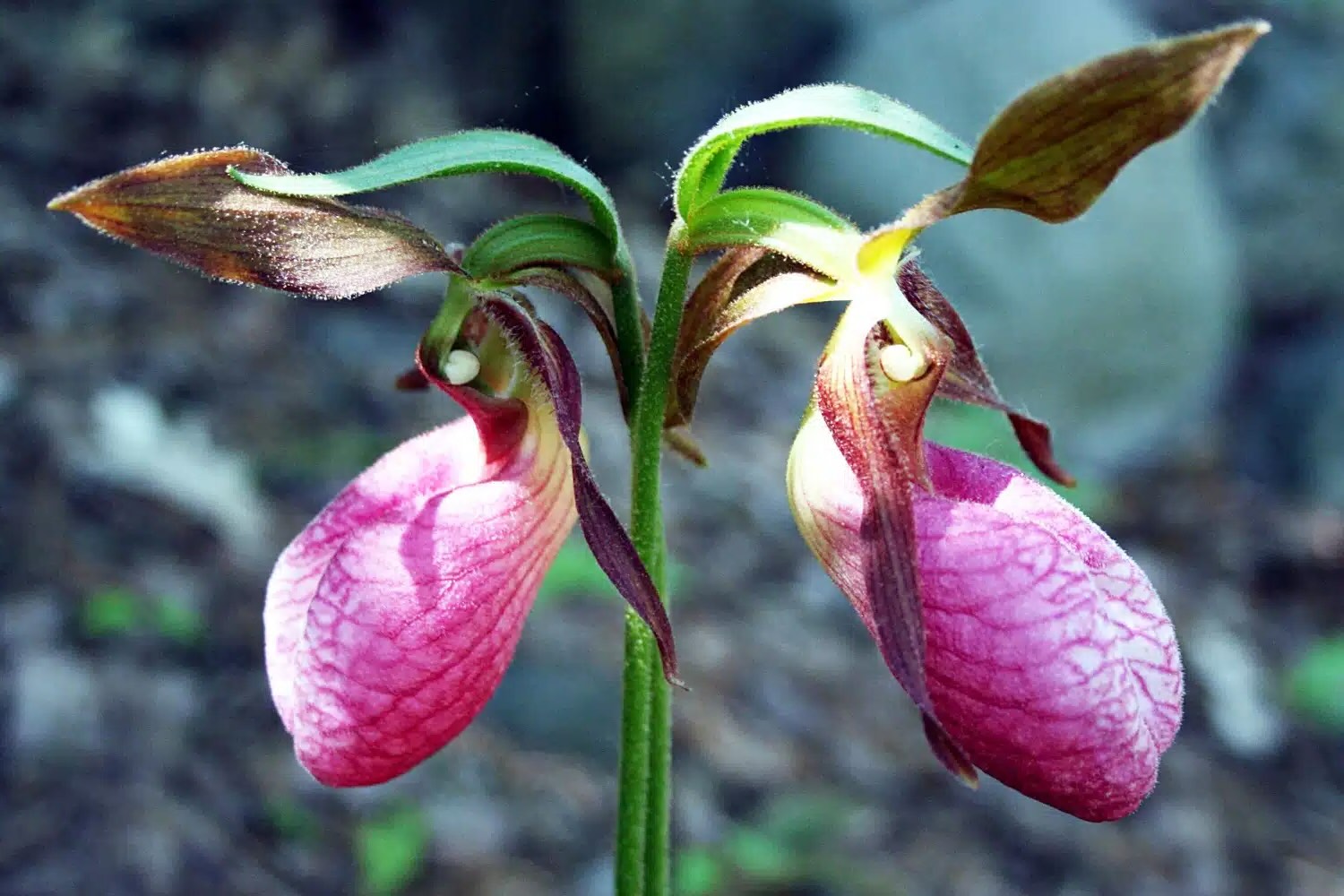
Lady's slipper orchids are some of the most intriguing and beautiful flowers in the plant kingdom. These unique blooms, known for their slipper-shaped pouches, have fascinated botanists and flower enthusiasts alike. But what makes them so special? Lady's slipper orchids belong to the genus Cypripedium and are found in various parts of the world, including North America, Europe, and Asia. They thrive in diverse habitats, from woodlands to grasslands. Despite their beauty, these orchids can be quite elusive and challenging to cultivate. Their intricate relationship with fungi for seed germination adds another layer of complexity. Lady's slipper orchids also hold cultural significance in many regions, often symbolizing beauty and rarity. Ready to learn more about these captivating flowers? Let's dive into 31 fascinating facts about Lady's slipper orchids!
Lady's Slipper: A Unique Orchid
Lady's slipper orchids are fascinating plants known for their distinctive appearance and intriguing characteristics. These flowers captivate botanists and flower enthusiasts alike. Let's dive into some amazing facts about these unique orchids.
- Lady's slipper orchids belong to the genus Cypripedium.
- The name "lady's slipper" comes from the flower's pouch-like shape, resembling a slipper.
- These orchids are native to temperate regions of the Northern Hemisphere.
- They thrive in a variety of habitats, including woodlands, meadows, and wetlands.
- Lady's slipper orchids are known for their vibrant colors, ranging from pink and yellow to white and purple.
Growth and Reproduction
Understanding how lady's slipper orchids grow and reproduce can be quite fascinating. These plants have unique methods of ensuring their survival and propagation.
- Lady's slipper orchids have a symbiotic relationship with fungi, which helps them obtain nutrients.
- The seeds of these orchids are tiny and dust-like, requiring fungal partners to germinate.
- It can take several years for a lady's slipper orchid to mature and produce flowers.
- These orchids reproduce both sexually (through seeds) and asexually (through rhizomes).
- Pollination is often carried out by bees, which are attracted to the flower's bright colors and sweet scent.
Conservation and Protection
Lady's slipper orchids face various threats in the wild, making conservation efforts crucial for their survival.
- Many species of lady's slipper orchids are considered endangered or threatened.
- Habitat destruction and illegal collection are major threats to these orchids.
- Conservation efforts include habitat preservation, cultivation, and reintroduction programs.
- Some regions have laws protecting lady's slipper orchids from being picked or disturbed.
- Botanical gardens and orchid societies play a significant role in conserving these plants.
Cultural Significance
Lady's slipper orchids hold cultural significance in various parts of the world. They have been admired and used in different ways throughout history.
- In North America, Native American tribes used lady's slipper orchids for medicinal purposes.
- The flower is a symbol of beauty and elegance in many cultures.
- Lady's slipper orchids have been featured in art, literature, and folklore.
- They are popular in horticulture and are often grown as ornamental plants.
- Some species of lady's slipper orchids are highly prized by collectors and can be quite valuable.
Interesting Varieties
There are numerous species and varieties of lady's slipper orchids, each with its own unique characteristics.
- The Showy Lady's Slipper (Cypripedium reginae) is known for its large, striking flowers.
- The Yellow Lady's Slipper (Cypripedium parviflorum) is one of the most widespread species in North America.
- The Pink Lady's Slipper (Cypripedium acaule) is easily recognizable by its bright pink flowers.
- The White Lady's Slipper (Cypripedium candidum) is a rare species with delicate white flowers.
- The Greater Yellow Lady's Slipper (Cypripedium calceolus) is found in Europe and Asia.
Fun Facts
Here are some fun and quirky facts about lady's slipper orchids that you might not know.
- Lady's slipper orchids can live for up to 50 years in the wild.
- Some species emit a faint, pleasant fragrance to attract pollinators.
- The pouch-like structure of the flower acts as a trap for insects, ensuring pollination.
- Lady's slipper orchids are often used in hybridization to create new orchid varieties.
- These orchids have been known to grow in some unexpected places, such as rocky cliffs and sandy dunes.
- The scientific name Cypripedium comes from the Greek words "Kypris" (another name for Aphrodite) and "pedilon" (meaning slipper), highlighting the flower's beauty and shape.
Final Thoughts on Lady's Slipper Orchids
Lady's slipper orchids are truly fascinating. Their unique appearance and intriguing growth habits make them stand out in the plant world. These orchids aren't just pretty faces; they play a crucial role in their ecosystems, supporting various insects and other wildlife. Despite their beauty, they're not the easiest plants to grow, requiring specific conditions to thrive. This makes them even more special for those who manage to cultivate them successfully.
Conservation efforts are vital for ensuring these orchids continue to grace our forests and gardens. Over-collection and habitat destruction pose significant threats to their survival. By understanding and appreciating these plants, we can contribute to their preservation. Whether you're a seasoned botanist or a curious nature lover, lady's slipper orchids offer a glimpse into the intricate and delicate balance of nature. Keep exploring, learning, and sharing your newfound knowledge about these remarkable flowers.
Was this page helpful?
Our commitment to delivering trustworthy and engaging content is at the heart of what we do. Each fact on our site is contributed by real users like you, bringing a wealth of diverse insights and information. To ensure the highest standards of accuracy and reliability, our dedicated editors meticulously review each submission. This process guarantees that the facts we share are not only fascinating but also credible. Trust in our commitment to quality and authenticity as you explore and learn with us.
